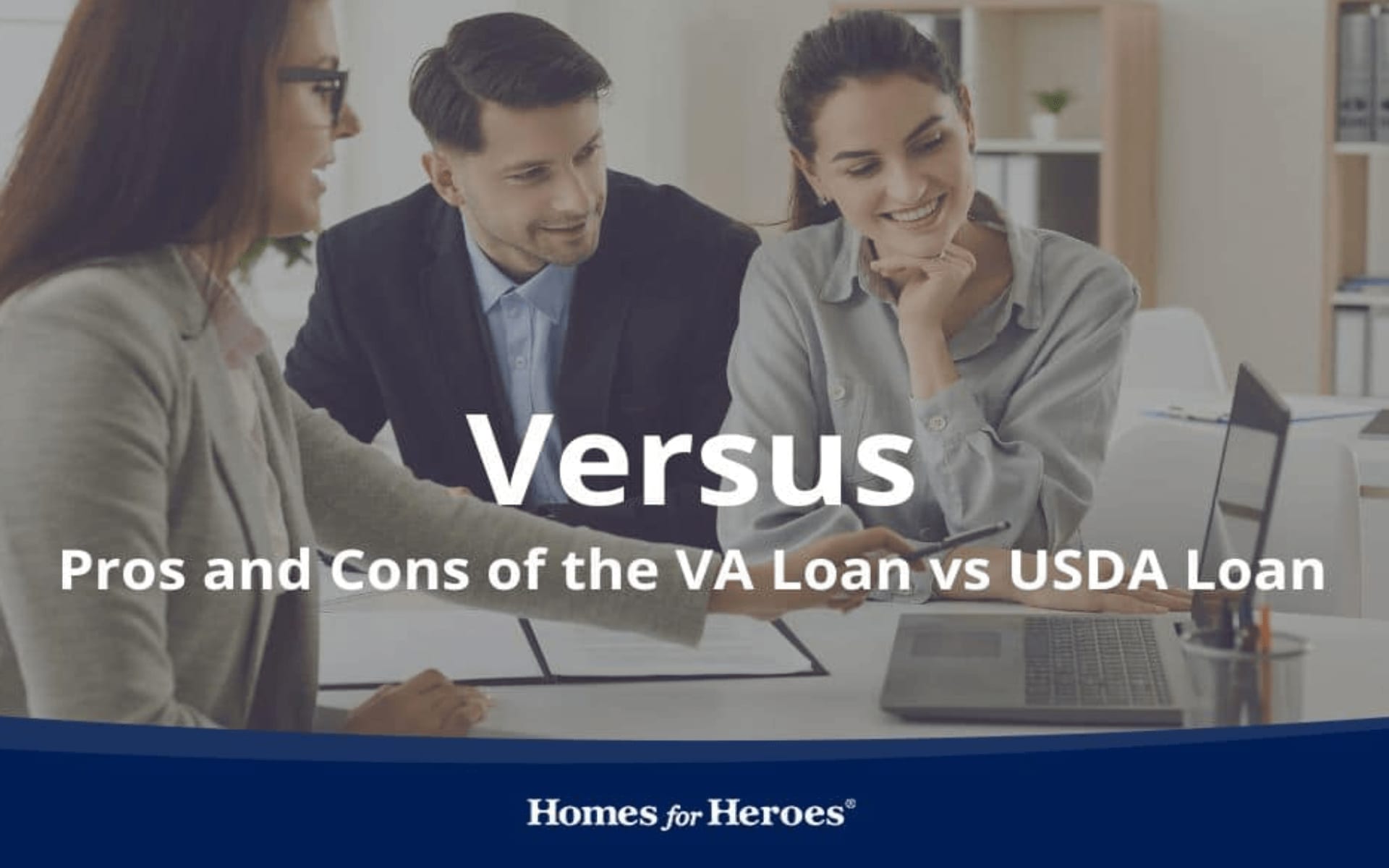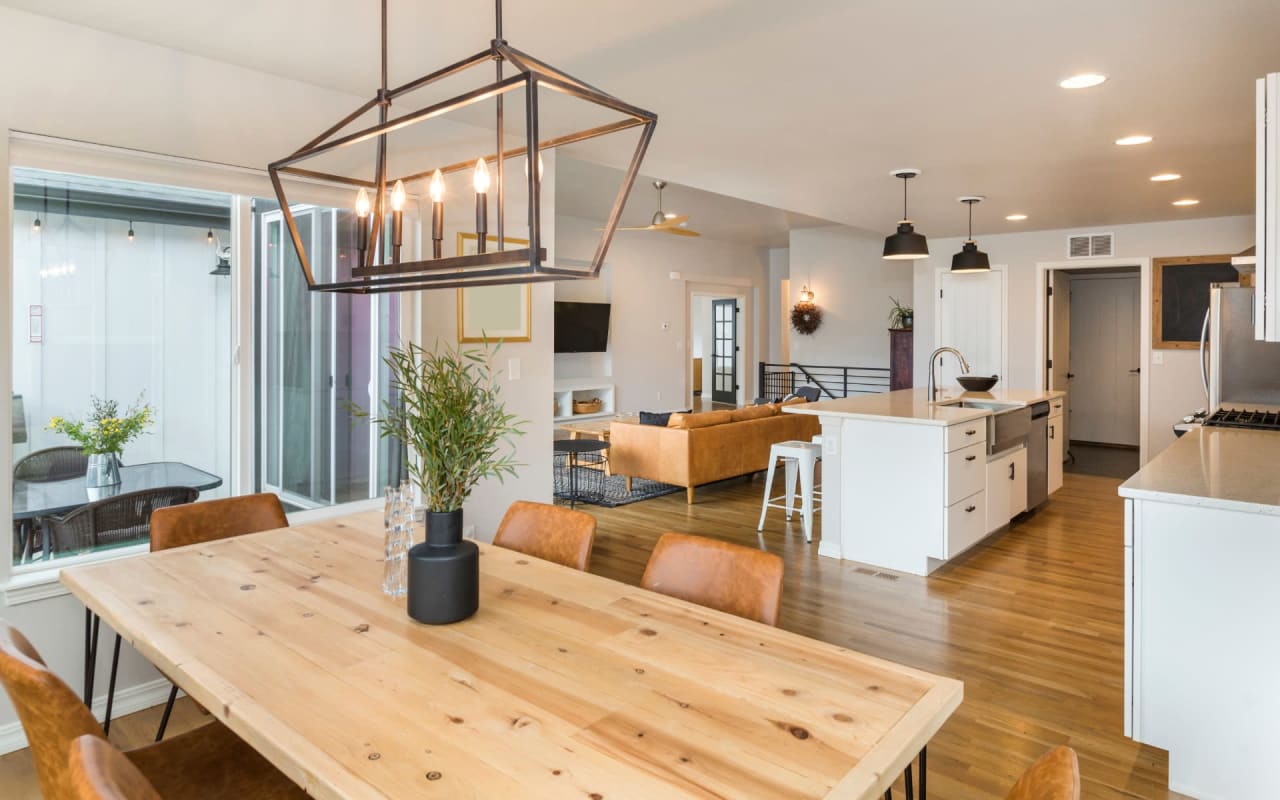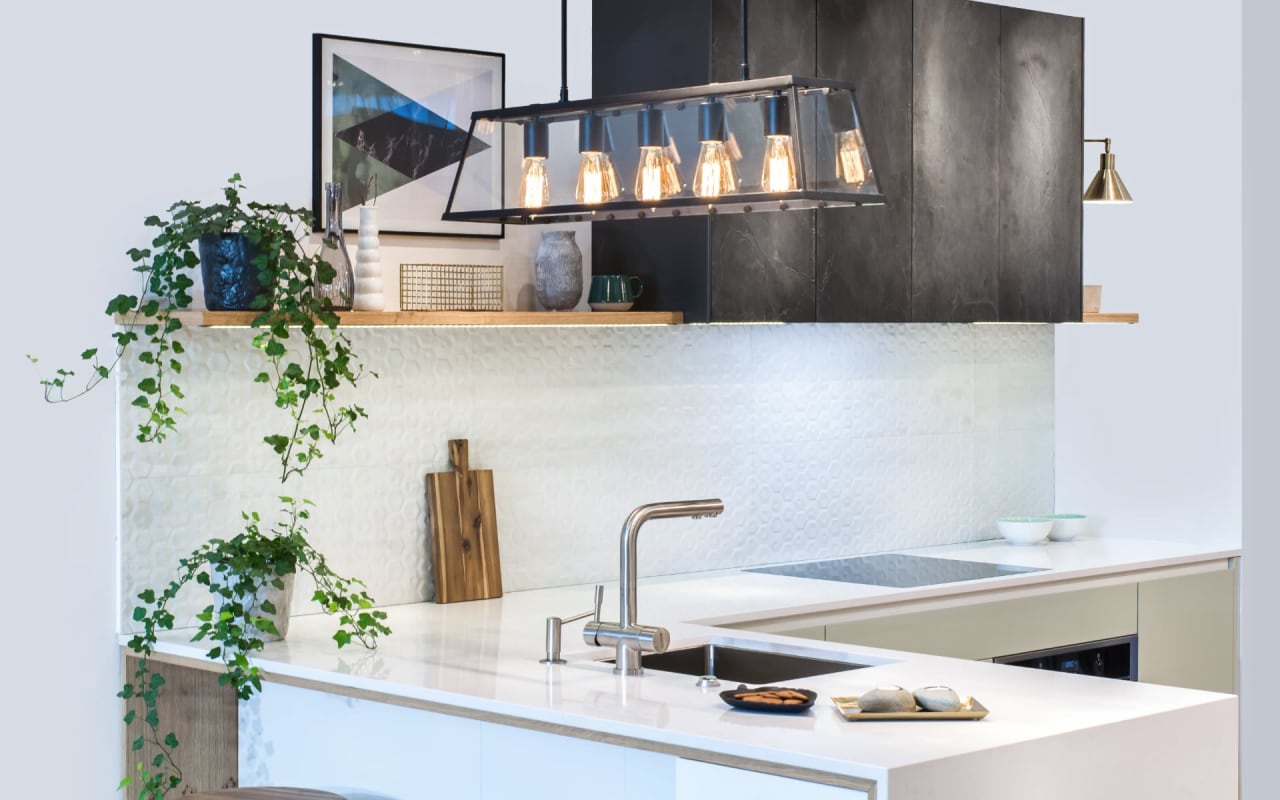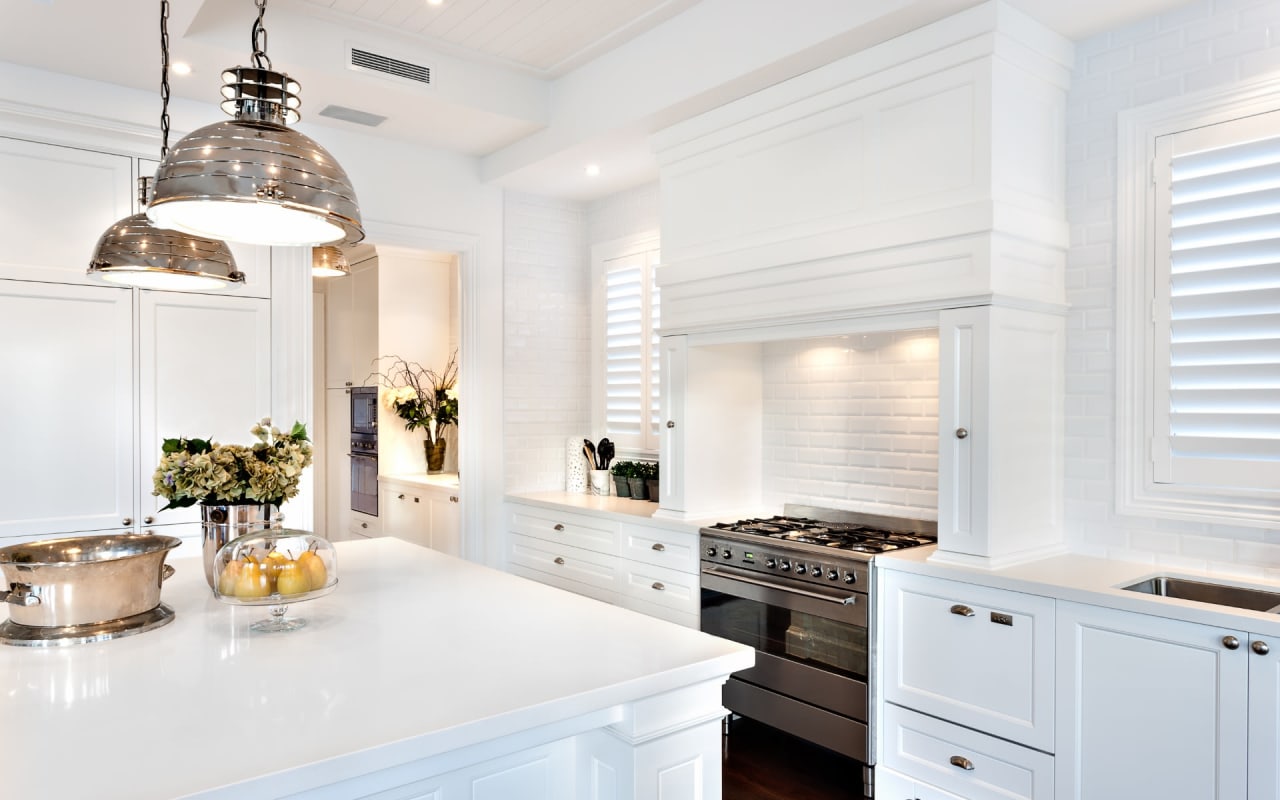
In a discussion of the USDA loan vs VA loan, the VA loan comes out on top if you are talking about money saved and flexibility. Nevertheless, it’s good to know your options, and there may be some cases where the USDA will work better for you. The two programs are from different departments of the federal government and have similar benefits, but the VA is tailored to help veterans and active duty military members in very specific ways. Both the benefits, and the requirements, can help you afford a new home.
While the VA loan program is clearly designed for active-duty military service members and Veterans, the USDA loan program is designed to encourage people to move into rural areas, to spur development in rural economies. It is targeted at low-to-moderate income people who are committed to buying and living in rural areas. There is speculation that there might be increasing interest in rural real estate because of the remote work options implemented for many workers over the past two years.
When looking at the USDA loan vs VA loan, they both have one important thing in common. The feature that gets the most attention for homebuyers (especially first time home buyers) is: Zero down payment when buying a home.
The other thing we should recognize right up front is that neither program will actually give you any money. In these programs, the money and mortgages come from private lenders and mortgage brokers, just like with conventional loans. Both the VA loan system and the USDA loan initiative are insurance programs. If you are eligible, they will insure your mortgage and guarantee it in the eyes of the private lender. It’s sort of a “we’ve got your back” situation for your mortgage.
USDA Benefits
One of the primary advantages of the USDA loan vs VA loan, is they are open to everyone. You don’t need to have military service to qualify. Other than that, the top three benefits you get from the USDA loan guarantee program are:
- No down payment requirement
- Reduced mortgage insurance
- Below-market mortgage rates
Those three can add up to a lot of savings when you are looking for a house. When you take into effect that the average down payment in the United States is between $10,000 and $15,000, the up front savings are substantial. And with reduced mortgage insurance and interest rates, you will save money, month-by-month, for years.
The U.S. Department of Agriculture also offers a Section 504 Home Repair loan to help borrowers fix up rural houses that need help.
VA Loan Benefits
When comparing the USDA loan vs VA loan, the top three benefits for the VA loan looks a lot like the USDA list:
- No down payment
- No private mortgage insurance
- Lower interest rate
You may notice that the middle one is different because with the VA loan, you don’t have to pay for any private mortgage insurance (PMI), and that can be a big difference over the course of the first few years of your mortgage. There is, however, a one-time VA Funding Fee (see below) with most VA loans which adds an expense, but it can also be rolled into your loan so you don’t need the money up front.
In addition, these are some of the other benefits you get with a VA loan guarantee.
- The VA loan benefit will limit your maximum closing costs, which can be paid by the seller.
- There is no minimum credit score required from the VA, but the private lender may have one.
- There is no penalty for paying your mortgage off early.
- You do not have to be a first-time home buyer to use a VA home loan.
- You can reuse the benefit throughout your lifetime.
- Your VA home mortgage is assumable.
- There is no maximum loan amount, however the VA does limit its guarantee.
- If you have a bankruptcy or foreclosure in the past, you aren’t automatically disqualified from a VA loan. If your foreclosure or bankruptcy was more than a year ago, you could be eligible.
- The VA home loan benefit can be used for single-family homes (up to four units), condos, manufactured homes, new builds and home improvements like solar panels.
- VA loans may also be available to the surviving spouse of a service member or veteran who were killed in the line of duty, passed as a result of a service-related injury, is a POW or is MIA.
The VA program also has four different mortgage options it offers. One is a straight-up purchase loan, two are designed to help veterans and military personnel refinance their mortgages and one for those who are Native Americans. Each is a good option depending on your circumstances.
USDA Home Loan – Requirements and Limits
The primary requirement for the USDA loan guarantee is that you don’t have a high income and you want to move to an eligible rural district. Your income can’t be more than 115% of the average income in your area, so just a bit over average. The house you buy must be your primary residence and the one you will occupy once the deal closes.
One other requirement for the USDA loan guarantee is you must currently lack sufficient housing and be a citizen, or equivalent, of the U.S. In addition to a small mortgage insurance policy, you will also need to pay a USDA Up-front Fee, which is a lot like the VA Funding Fee. It’s like an upfront mortgage insurance premium, and it too can be rolled into the mortgage loan amount.
VA Home Loans – Requirements and Limits
The main requirement, as you might have guessed, is that you need to have served in the military or uniformed sources. You could be eligible if you served in:
- Army
- Navy
- Marines
- Air Force
- Coast Guard
- Space Force
- National Guard
- Veterans of any of these services
- Reserve members
- NOAA
- Public Health Service
- Surviving spouses of veterans or service members
There are some service requirements in terms of how much time you were in the military and the best chart for that comes from the VA itself. Generally those criteria include:
- Serve for 90 consecutive days of service during wartime or 181 Days of service during peacetime
- 2 years of service if enlisted in the Post-Vietnam era
- Enlisted six years in the National Guard or Reserves
- Surviving spouse of a veteran who died from a service-related injury or disability
- Surviving military spouses of a POW/MIA service member
- Surviving military spouses of a service member killed in the line of duty
Members of the uniformed services should contact their branch to find out the eligibility requirements for VA benefit.
Certificate of Eligibility and Entitlement
The Certificate of Eligibility is exactly what it sounds like: it verifies to the VA loan processors that you are, in fact, eligible for the program. It also tells you how much the VA loan will cover, meaning how much the The Department of Veterans Affairs will guarantee your loan. The amount of that guarantee is called your “entitlement.”
The basic entitlement will cover a $144,000 mortgage loan. If that seems low, it is. Consequently the VA changed the basic entitlement to keep up with the market. It came up with a secondary entitlement that covered home loans up to $647,000. Remember: There is no upper limit on a VA loan, but they will only insure your loan up to that set entitlement.
If you want to buy a home that is more than your entitlement, the regular factors kick in, so you would then be responsible for a down payment and private mortgage insurance that cover the part of the loan that exceeds that $647,000 threshold.
The VA Home Loan Certificate of Eligibility form is easy to find online. On page 3 of the form, there is a list of addresses if you want to send them a Request for a Certificate of Eligibility (VA Form 26-1880). You can also mail your completed VA eligibility form to the appropriate office on that list.
If you’ve already got a private lender ready to work with you on your VA loan, they can request a Certificate of Eligibility directly from the Department of Defense. There’s an online system called Web LGY that has this information online and it can be immediately downloaded. You can also do it yourself by using the VA’s eBenefits portal.
H3 Occupancy
The U.S. Department of Veterans Affairs requires that when you apply for a VA loan guarantee, it must be for the residence that will be your primary home. In terms of occupancy, you need to move into the new house within 60 days. The occupancy rules have some exceptions because sometimes, due to deployments or retirements, the new owners can’t move in right away or may be away from the residence. These exceptions are:
- Retirement – If you want to buy a home somewhere well in advance of your actual retirement day, you have up to a year to move in.
- Fixer Upper – If the house needs repairs or renovations that will take longer than 60 days, you can get an exception.
- Spouses – If your spouse moves into the home while you are deployed, that counts.
- Work Away from Home – If your job takes you away from home, you can ask for an intermittent occupancy exception.
- Unusual Circumstances – Talk to your loan officer about other obstacles to your occupancy.
VA Funding Fee
We mentioned the VA Funding Fee earlier. Every VA loan includes this one-time fee –there are no other VA loan fees–and that can range between 2.6% and 3.5% of the loan amount (depending on whether it’s your first time or not). This is due at closing. If you were injured or disabled as a result of your service in the military, you probably don’t need to pay this fee. Likewise, if you received a Purple heart, this fee is waived.
Receive an Average of $3,000 from Homes for Heroes
Because the private lender is a big player in both the USDA mortgages and VA mortgages, it is important to keep the discussions about “requirements” straight. Sometimes the rules are coming from the federal government, but more than likely your private mortgage lender will have more requirements as they try to qualify you for the loan. That’s why our Homes for Heroes mortgage specialists are so important as veterans and current service members look for a home and a home loan.
Homes for Heroes assists firefighters, EMS, law enforcement, active military and veterans, healthcare workers and teachers; buy, sell and refinance their home or mortgage. But if you work with their local real estate and mortgage specialists to buy, sell or refinance; they also provide significant savings after you close on a home or mortgage. They refer to these savings as Hero Rewards, and the average amount received after closing on a home is $3,000, or $6,000 if you buy and sell!
Simply sign up to speak with a member of the team. There’s no obligation. After you sign up they will contact you to ask a few questions and help you determine the appropriate next steps for you. When you’re ready, they will connect you with their local real estate and/or mortgage specialists in your area to assist you through every step and save you money when it’s all done.
It is how Homes for Heroes and their local specialists thank community heroes, like you, for your dedicated and valuable service.




